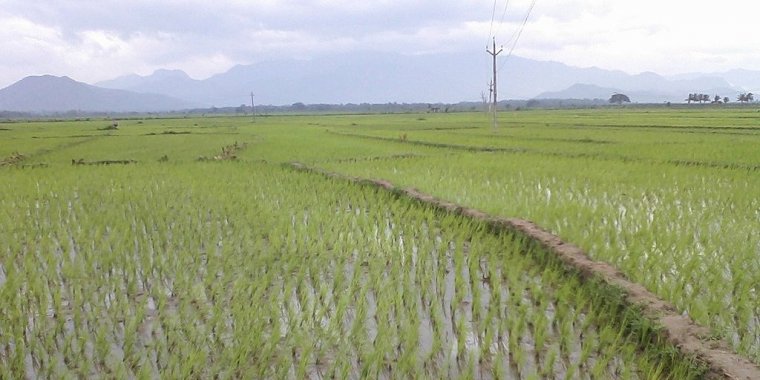| Health / Health News |
Course grains better than rice for health, environment
Shifting away from white, polished rice to a diet that includes more wheat and coarse grains can improve how Indians deal with micronutrient deficiencies, and reduce greenhouse gas (GhG) emissions associated with paddy cultivation.

Paddy fields in Karthalipalem village, Andhra Pradesh, India. ![]()
India grows a variety of coarse grains — including sorghum, pearl millet, maize, barley, and finger millet — as well as many ‘small millets’ such as kodo millet, little millet, foxtail millet, proso millet, and barnyard millet.
The paper blamed India’s ‘green revolution’ in the mid-1960s, which focused on cultivation of wheat and rice to meet food security demands, for the decline of the area of coarse cereals. While wheat and rice received research, extension and market support, on the supply side there was a marked shift away from coarse grains, which it says had negative consequences for dietary micronutrients.
Around 500 million people, or more than two-thirds of the Indian population, are now affected by deficiencies in protein and micronutrients such as iron, zinc, and vitamin A.
The worst of these life-threatening deficiencies is iron (90 per cent), followed by Vitamin A (85 per cent) and protein (50 per cent).
The study also shows that micronutrient deficiency to be worse in India’s urban areas than in the rural hinterland.
Nutrient deficiencies were found less in the wheat-eating northern and western areas of the country than in the south and east, where rice is the staple food.
Nutrient deficiency can be overcome within existing household budgets by diversifying diets to include coarse cereals, pulses, and leafy vegetables, and by reducing rice intake.
Additionally, if the suggested dietary changes are made, India’s agricultural GhG emissions could be reduced by up to 25 per cent. Rice paddies are a human-made source of methane, a GhG, but one that can be controlled.
Methane is produced by bacteria that digest straw ploughed back into fields in paddy fields to enrich it. Carbon dioxide is released when farmers resort to burning as a cheap way to get rid of agricultural residues.
Coarse grains are now gaining recognition as nutrient-rich and having desirable attributes such as drought-tolerance resilience to climate change, improving soil conditions and releasing less GhGs like methane, especially when compared to rice paddies. (SciDev.Net)
YOU MAY ALSO LIKE




